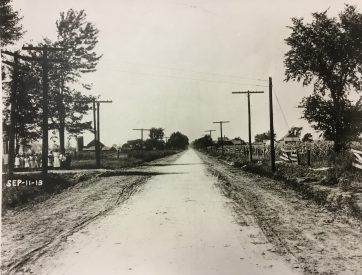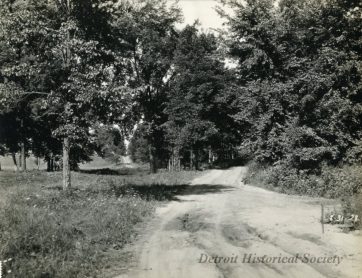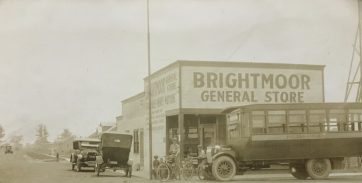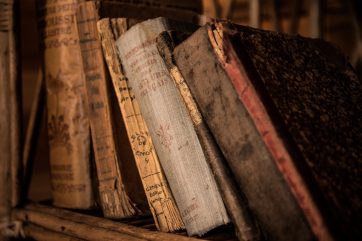History of the Development of B.E. Taylor’s Brightmoor, Detroit Neighborhood Part III
Early Brightmoor
From the start of his ambitious sales campaign in 1922, Burt Eddy Taylor offered a variety of purchase options for prospective homeowners in Brightmoor. By the end of 1922, lot sales were increasing, home building was accelerating and the neighborhood borders were expanding. Brightmoor’s population increased from 8 residents and 6 houses in 1922, to 11,319 residents and 3,958 houses by 1925.
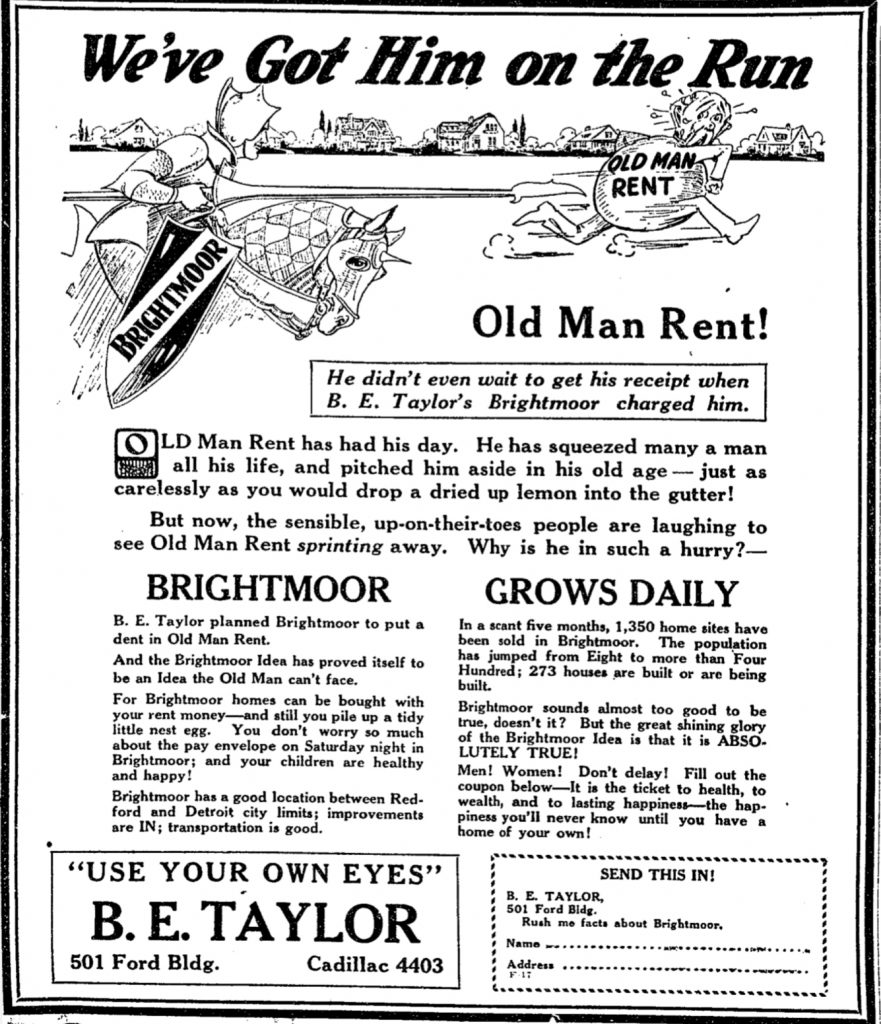
One of Taylor’s sales strategies was to sell the lots in units of three. With this strategy, the house was to be built on the middle lot leaving an empty plot on each side, which allowed buyers to sell the vacant lots to pay for the homes they built (Loeb, 2001). Taylor also offered individual lots with a house that sold for an average price of $3,500. Another option was to rent-to-own for $35.00 a month with a small down payment.
B.E. Taylor Homes
Home buyers had a choice to purchase one of Taylor’s houses or to build their own. For those who purchased one of Taylor’s homes, construction would begin as soon as the sale was made.
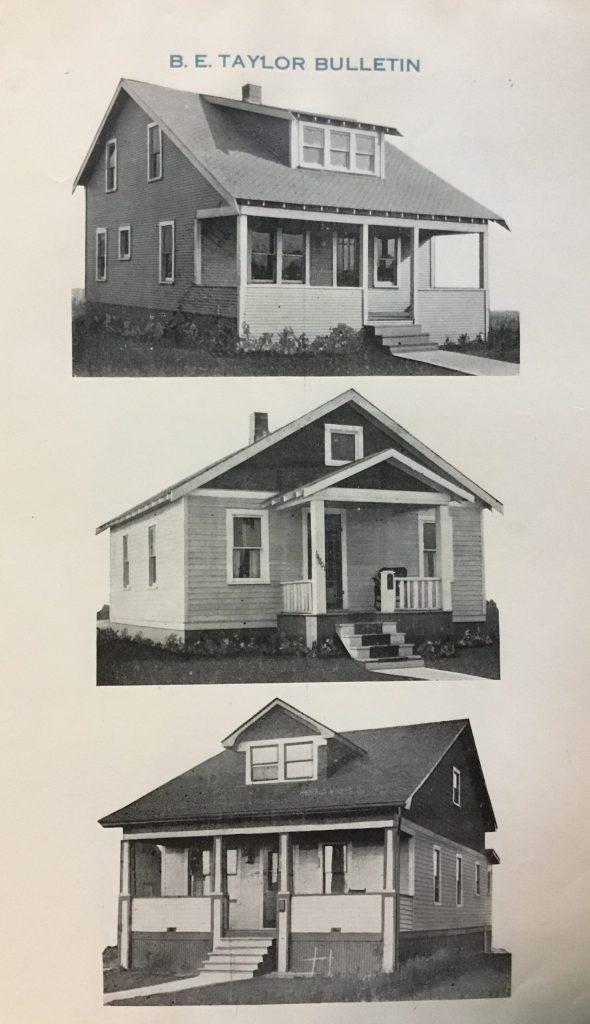
Taylor offered several house designs, all of which were built by standardized plans and labeled by number. Taylor purchased materials in mass quantities, and he hired contractors to haul the materials to the building sites and construct the houses.
Taylor’s house designs were typically a single-story Michigan bungalow-type folk house with two bedrooms, a living room and a kitchen. Each room was equipped with a pull cord light. For an additional $35.00, an outhouse with a chemical toilet could be added. (Detroit City Council, 2008). The unadorned houses were generally purchased with the understanding that buyers would add additional features and amenities as they earned over time. A common improvement was to add more kitchen space, which led to the neighborhood being called “Kitchentown” (Let’s Save Michigan.)
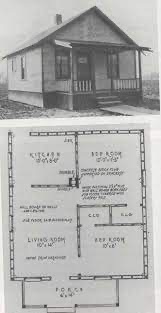
One of Taylor’s most popular designs was house design no. 514. It had a layout of 20 feet by 22 feet and was usually built on cedar posts. The exterior walls were typically clad in wood or metal siding or asbestos shingles.
Some buyers chose to build their own homes on the lot they purchased from Taylor. Since Brightmoor did not have building or zoning restrictions, housing designs and materials varied. (Detroit City Council, 2008). Some buyers spent all of their money to purchase the lot and lived in tents on their lots while their houses were being completed. Others, who could not afford to build an entire house at once, lived in one-room structures and then added rooms as their income permitted.
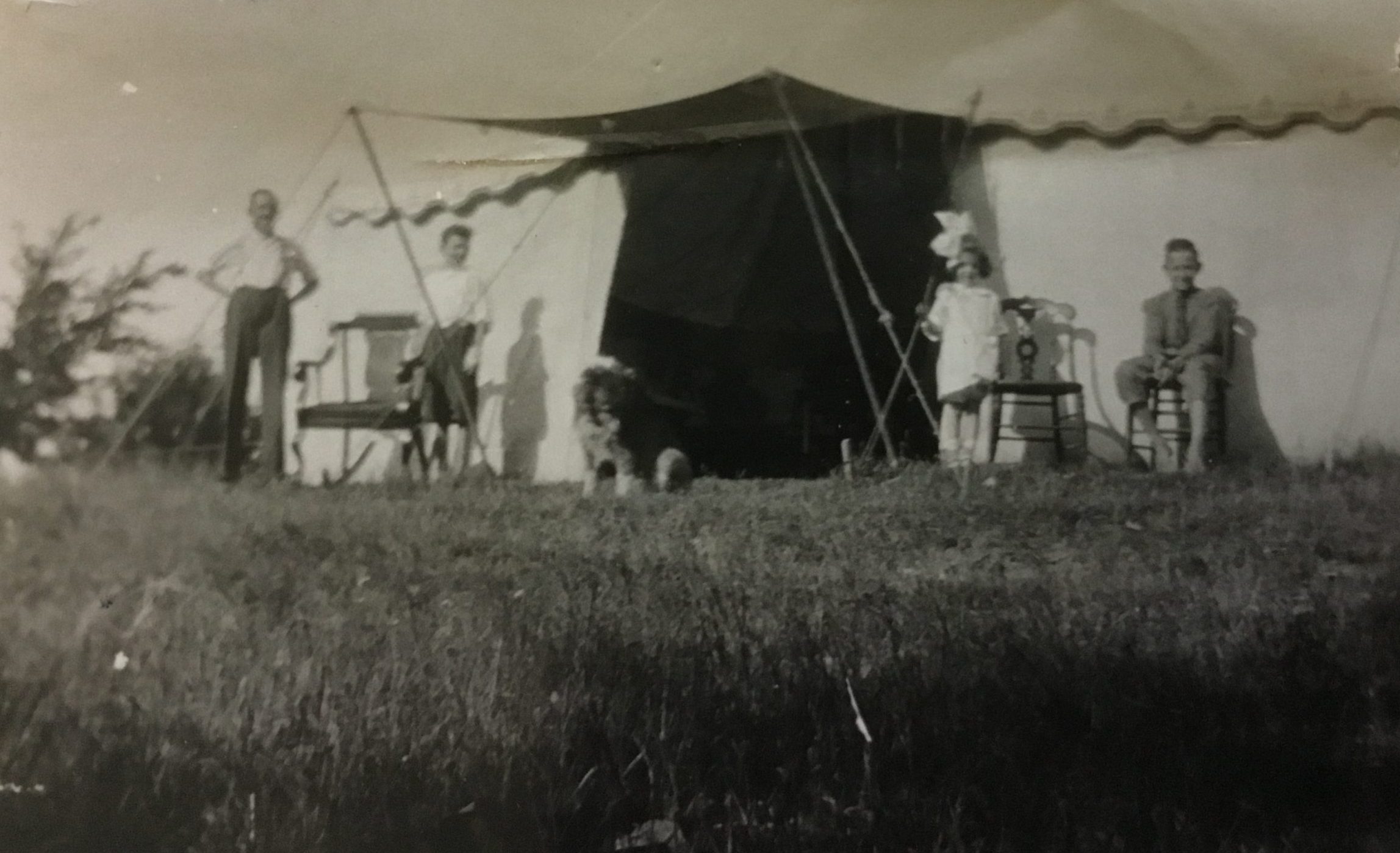
“Out from the city’s turmoil
Out from the tired throngs’ rush,
Out to the wide open spaces,
To the land of the trees and brush,
Away from the sun baked pavements,
and away from the gloomy tenement walls,
Into God’s pure air and sunshine—You can hear the country call.
Go where the life’s worth living,
Away from vice, the city’s lure,
To a town out on Grand River
Known as B.E. Taylor’s Brightmoor!” By Carl Reed, Brightmoor resident 1923
(B.E. Taylor Bulletin, Issue 31, pg. 3, 1923)
Developing the Brightmoor Community
Relatively young families from rural, undeveloped areas of the South, were among the early purchasers of homes in Brightmoor. Taylor encouraged community engagement by holding various events in the local parks, including a 4th of July celebration and a Southern barbecue. He opened the first school in September 5th, 1922 (Detroit Free Press (1858-1922), Aug 27, 1922) and he granted the use of the Community Hall for the first church service on September 14th, 1922.

Preschool and Sunday school were held under the direction of the Redford Methodist Church by the fall of 1922 (Detroit Free Press, September 9th 1922).
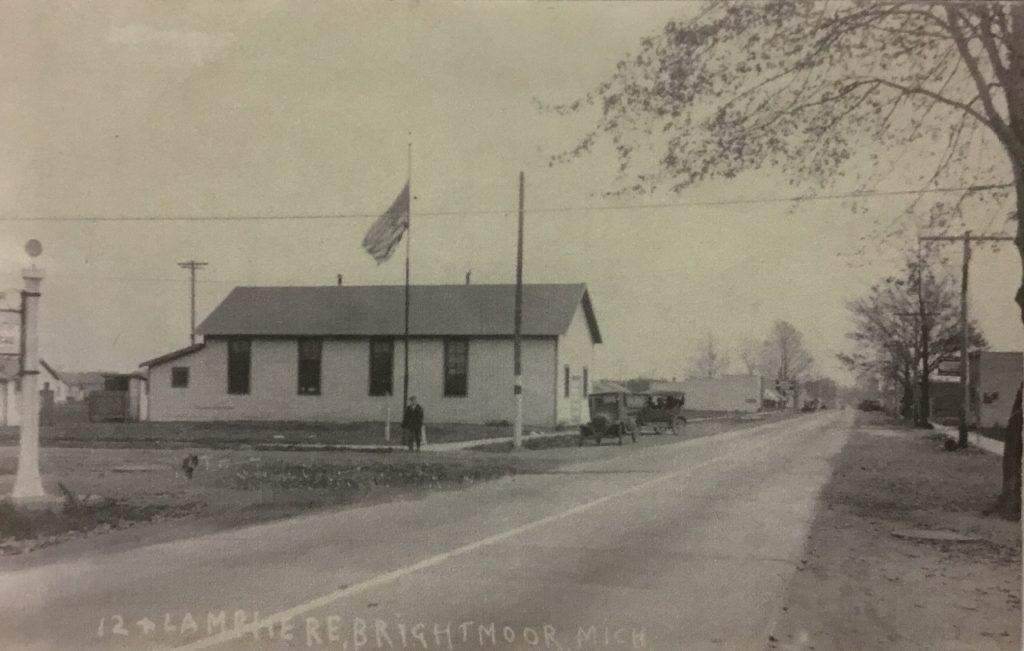
Library services were initially provided by Wayne County and were held at a temporary, make-shift community center located in a house at 14116 Westbrook near Kendall until the permanent Community Hall was completed. In 1926, library services were picked up by the Detroit Public Library and moved to another temporary location on the north-west corner of Fenkell and Trinity before finding its home in the Guardian Detroit Bank building on Fenkell and Lahser from 1941-1976. (Library Service, Detroit Public Library. October 1927).
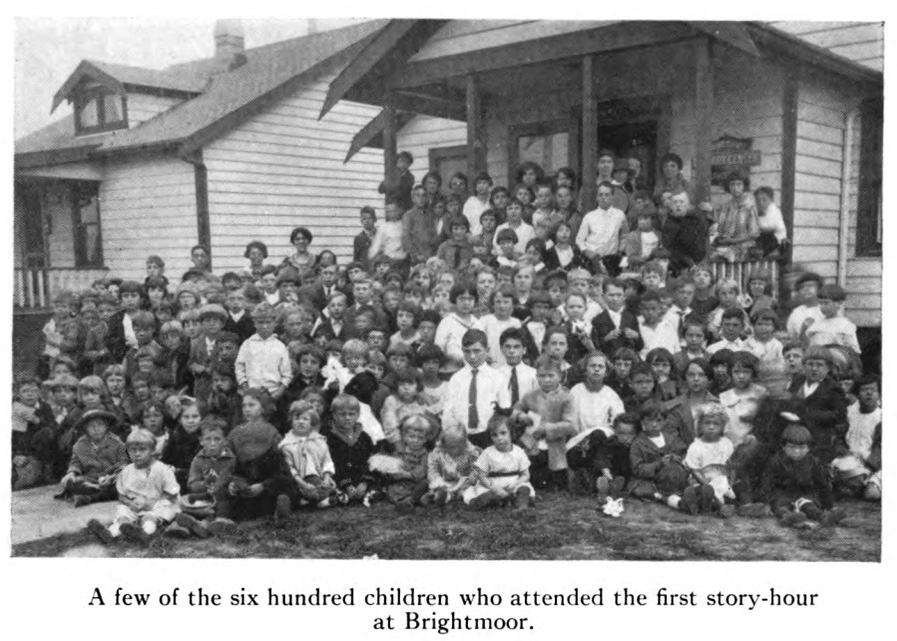
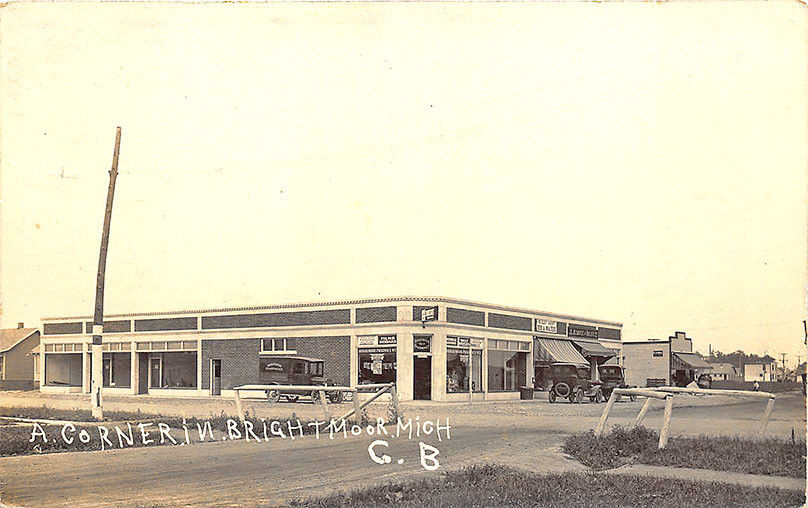
By the late 1920s, some residents of Brightmoor were able to improve their financial status, which allowed them to make enhancements to their homes, such as digging basements, adding indoor bathrooms, and remodeling. Some home owners built better homes on the extra lots they purchased. Unfortunately, not all homeowners were able to maintain, much less expand their Brightmoor home. (Loeb p. 61)
Stay tuned for part IV or subscribe for email updates
SUBSCRIBE FOR UPDATES
Bibliography
“BRIGHTMOOR IS TO HAVE LARGE COMMUNITY HALL.” Detroit Free Press (1858-1922), Jul 02, 1922. https://www.proquest.com/historical-newspapers/brightmoor-is-have-large-community-hall/docview/566850024/se-2.
City of Detroit Water Board work crew. Circa 1926 Detroit Historical Museum object 2016.067.002.
“A corner in Brightmoor” circa 1925. Burt Eddy Taylor Personal Papers (1913-1945), Burton Historical Collections, Detroit Public Library, Detroit, MI.
“Display Ad 65 — no Title.” Detroit Free Press (1858-1922), Mar 19, 1922. https://www.proquest.com/historical-newspapers/display-ad-65-no-title/docview/566807770/se-2.
“Display Ad 72 — no Title.” Detroit Free Press (1858-1922), May 07, 1922. https://www.proquest.com/historical-newspapers/display-ad-72-no-title/docview/566741019/se-2.
“BRIGHTMOOR CENTER EXPANDS 444 ACRES.” Detroit Free Press (1858-1922), Jul 16, 1922. https://www.proquest.com/historical-newspapers/brightmoor-center-expands-444-acres/docview/566754515/se-2.
“BRIGHTMOOR NOW HAS FIRE DEPARTMENT.” Detroit Free Press (1858-1922), Oct 01, 1922. https://www.proquest.com/historical-newspapers/brightmoor-now-has-fire-department/docview/566876173/se-2.
“Brightmoor Shows Astonishing Growth.” Detroit Free Press (1923-), Nov 09, 1924, General edition. https://www.proquest.com/historical-newspapers/november-9-1924-page-96-97/docview/1813265967/se-2
Brightmoor’s First Church. (1922, Sep 09). Detroit Free Press (1858-1922)Retrieved from https://www.proquest.com/historical-newspapers/sermons-on-man-take-serial-form/docview/566800423/se-2
“Display Ad 58 — no Title.” Detroit Free Press (1858-1922), Aug 27, 1922. https://www.proquest.com/historical-newspapers/display-ad-58-no-title/docview/566842468/se-2
“Display Ad 36 — no Title.” Detroit Free Press (1858-1922), Sep 03, 1922. https://www.proquest.com/historical-newspapers/display-ad-36-no-title/docview/566793595/se-2
“Display Ad 7 — no Title.” Detroit Free Press (1858-1922), Aug 10, 1922. https://www.proquest.com/historical-newspapers/display-ad-7-no-title/docview/566856446/se-2
KILLIAN, L. M. (1953). Southern White Migrants—Who, Why And Whither? The Social Science Bulletin, 6(4), 7–15. http://www.jstor.org/stable/45214743
Let’s Save Michigan, “Brightening Brightmoor Historical House/Landscape, Detroit.” http://www.letssavemichigan.com/placemaking-contest/brightening-brightmoor-historical-houselandscape- detroit/..9
Library Service. Detroit Public Library. October 1927. https://www.google.com/books/edition/Library_Service/lycYAAAAMAAJ?
Loeb, C. S. (2001). Entrepreneurial vernacular : developers’ subdivisions in the 1920s. Johns Hopkins University Press.
“Old man rent” Detroit Free Press (1858-1922), Aug 17, 1922. https://www.proquest.com/historical-newspapers/display-ad-12-no-title/docview/566844686/se-2./
“See Brightmoor” “May 6, 1923 (Page 36 of 138).” Detroit Free Press (1923-), May 06, 1923, General edition. https://www.proquest.com/historical-newspapers/may-6-1923-page-36-138/docview/1812396401/se-2.
“TAYLOR MAKES START ON 30 MORE HOUSES.” Detroit Free Press (1858-1922), Jul 30, 1922. https://www.proquest.com/historical-newspapers/taylor-makes-start-on-30-more-houses/docview/566749450/se-2.
“We Invite You to Brightmoor July 4th.” Detroit Free Press (1923-), Jul 03, 1923, General edition. https://www.proquest.com/historical-newspapers/july-3-1923-page-9-22/docview/1812443017/se-2.



